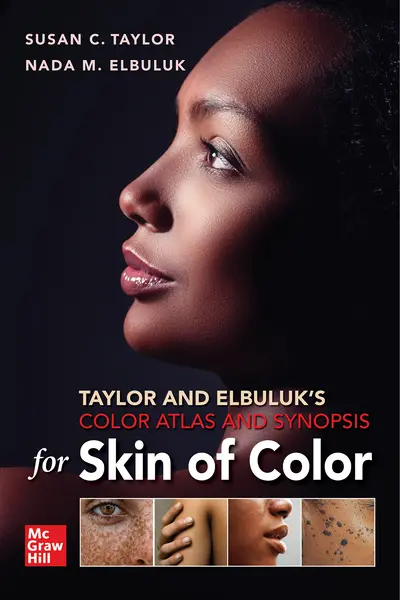My Account Details

ISBN10: 1264268904 | ISBN13: 9781264268900

Step 1 . Download Adobe Digital Editions to your PC or Mac desktop/laptop.
Step 2. Register and authorize your Adobe ID (optional). To access your eBook on multiple devices, first create an Adobe ID at account.adobe.com. Then, open Adobe Digital Editions, go to the Help menu, and select "Authorize Computer" to link your Adobe ID.
Step 3. Open Your eBook. Use Adobe Digital Editions to open the file. If the eBook doesn’t open, contact customer service for assistance.
The expert guide to identifying and understanding the clinical differences of common dermatology conditions in patients of all skin types An essential component of dermatology training is the accurate identification of skin diseases in all patients. Taylor and Elbuluk's Color Atlas and Synopsis for Skin of Color is designed to help you recognize the differences in disease presentation amongst patients with lighter and darker skin, thus improving diagnostic accuracy and lessening the burden of disease for patients of color. More than 350 color images illustrate the variances in the appearance of common dermatology conditions between Fitzpatrick’s Skin Type I-III lighter skin types and Fitzpatrick’s Skin Type IV-VI darker skin types. This is an invaluable tool for providing optimal care to patients of all skin types—and an ideal resource for medical students, residents, attending physicians, and other healthcare providers. Taylor and Elbuluk's Color Atlas and Synopsis for Skin of Color covers: Inflammatory Disorders Infections Follicular Disorders Benign Neoplasms Malignancies Pigmentary Disorders Photoinduced Disorders Drug Reactions Common Cutaneous Disorders in Skin of Color Populations
Inflammatory and Papulosquamous Disorders
Atopic Dermatitis Morphological types
Papular eczema
Follicular accentuation
Dyschromia
Lichenification
Pityriasis alba
Psoriasis
Morphology and color (violaceous and hyperpigmented with lichenification vs erythematous and devoid of silvery white scale)
Contact Dermatitis
Morpholology and color (hyperpigmentation vs erythema vs LPP-like in South Asian population)
Pityriasis Lichenoides Chronica
Morphology and color (hypopigmented patches or vitilgo like in darker skin vs erythematous guttate papular appearance in light skin)
Pityriasis Rosea
Morphology and color (similar distribution hyperpigmented to violeceous vs. erythematous; papular variant)
Seborrheic Dermatitis
a Facial Morphology and color (petaloid seborrheic dermatitis and hypopigmentation vs erythema)
b. Scalp - Morphology and color (more scale vs sebopsoriasis like in lighter skin)
Lichen Planus
Morphology and color (similar morphology except hypertrophic LP darker violet or brown to black vs bright violet in lighter skin)
Need support? We're here to help - Get real-world support and resources every step of the way.